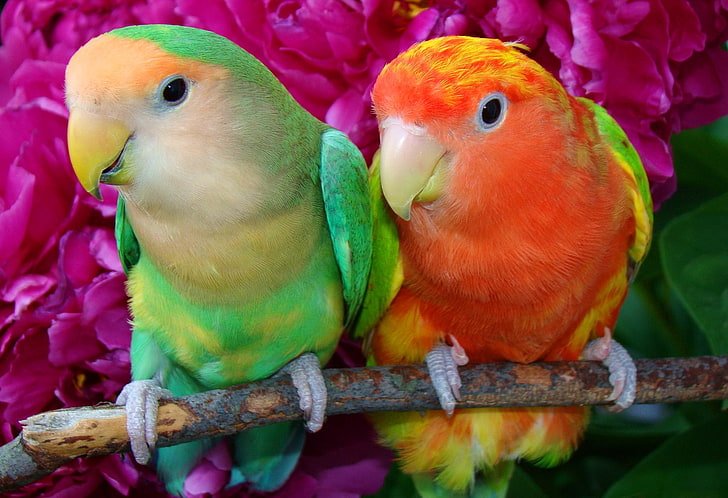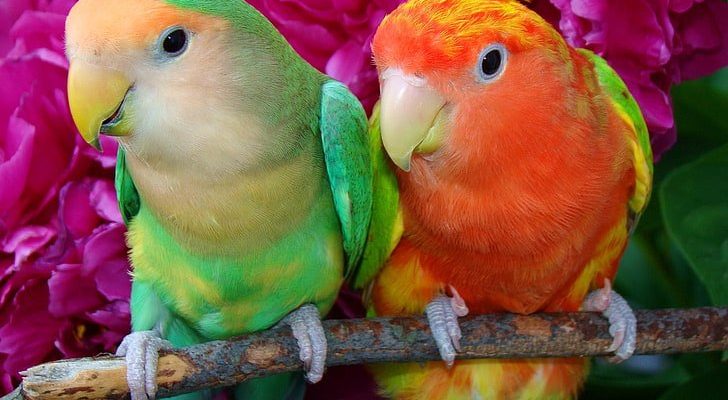
Imagine a busy aviary buzzing with the sounds of chirps and squawks, where colorful feathers flit about cheerfully. While that sounds delightful, it’s essential to consider the personalities and needs of the birds involved. Just because two types of birds can share a space doesn’t mean they will get along. Like people, birds have their own quirks and preferences. So, sit back, grab your coffee, and let’s explore whether your parrot could find a feathered friend.
Understanding Parrot Behavior
Before we jump into mixing various bird species, let’s take a moment to look at parrots themselves. Parrots are incredibly intelligent and social creatures. They thrive on interaction, both with their human companions and, ideally, with other birds.
Most parrots enjoy being part of a flock. In their natural habitats, they live in large groups, which helps with socialization. If you think about it, being in a flock keeps them happy and engaged, just like being in a group of friends does for us. However, when introducing new friends, things can get complicated. Parrots can be territorial, especially if they’ve established their own space or feel threatened. So, understanding their behavior is key to making this work.
Remember, not all parrots are created equal. Some larger species, like macaws, may not mesh well with smaller birds, while other species, such as budgerigars, are more adaptable. Knowing your parrot’s individual personality can be a game-changer when it comes to deciding if it’s a good fit with other birds.
Choosing the Right Companion Birds
If you’re keen to create a flock at home, choosing the right companions for your parrot is crucial. Some bird species bond better with parrots than others.
- Budgies: These small, friendly birds often get along well with many parrot species. Their playful nature makes them a great choice.
- Cockatiels: Known for their gentle demeanor, cockatiels can be fantastic companions for parrots.
- Canaries and Finches: While these smaller birds are generally non-aggressive, their more passive nature may not stimulate a parrot’s social needs effectively.
Of course, there are some birds you should avoid pairing with parrots. For instance, larger birds like cockatoos may overwhelm smaller parrots, and some species can be downright aggressive. It’s essential to research each potential bird’s traits before making a decision.
Setting Up a Shared Space
Once you’ve decided on potential companions for your parrot, the next step is to create a shared space that accommodates everyone’s needs. Think of it as throwing a party: you want to make sure your guests feel comfortable and have plenty of room to express themselves.
Start by providing adequate space. Parrots need room to spread their wings, especially if they’ll be sharing their territory with other birds. A larger cage or an aviary setup is often the best choice. Ensure that each bird has its own perch and space to retreat. This not only minimizes stress but also helps maintain harmony in your feathery household.
Additionally, provide plenty of toys and stimulation. Parrots are curious creatures that love to explore. By offering various toys, perches, and even some hiding spots, you can keep all your birds entertained and engaged.
Introducing Birds Gradually
Now that you have the space set, it’s time to introduce your parrot to its new companions. But remember, patience is key! Introducing birds should be done gradually, much like introducing new people to your friend group.
Start by placing the cages near each other, allowing the birds to see and hear each other without direct contact. This is like a first date—lots of observation and a little distance! Watch their reactions. Are they curious? Fearful? Aggressive? This initial stage can help gauge how they might interact later.
Once they seem comfortable, you can proceed to supervised meetings. Use a neutral space, free of any bird’s established territory. Keep these initial interactions short and positive. Gradually increase the time they spend together as long as there are no signs of aggression.
Monitoring for Problems
Even with the best planning, issues can occur when keeping parrots and other birds together. It’s essential to monitor their interactions closely, especially in the early stages.
Be on the lookout for signs of stress or aggression. If a parrot starts to puff up, squawk loudly, or chase another bird, it might be time to separate them. Understanding bird body language can save you a lot of headaches. For example, if a bird is hiding or avoiding others, it might indicate discomfort.
If conflicts arise, don’t panic. Sometimes separating the birds for a short time can help calm tensions. Reintroducing them slowly can help rebuild a positive relationship. If you consistently see problems, it may be worthwhile to reconsider the living arrangements.
The Benefits of Flock Living
So, why should you even consider keeping parrots with other birds? There are some real benefits to flock living that can enhance the well-being of your feathered friends.
For starters, social creatures like parrots derive a lot of happiness from companionship. If you’re away for work or running errands, having a buddy can reduce feelings of loneliness. Just like us, birds can enjoy the company of their own kind, which leads to a happier and healthier lifestyle.
Also, when you keep multiple birds, they often engage in communal activities, such as playing together or preening. This interaction can lead to more enrichment, both mentally and physically, for all the birds involved.
Final Thoughts
Keeping parrots with other birds can be rewarding, but it’s not something that should be rushed into. Understanding your parrot’s behavior, choosing the right companions, creating a suitable environment, and monitoring their interactions are all key steps.
Ultimately, every bird is unique, and while some may thrive in a multi-species household, others may prefer to be the lone star of the show. Whether you decide to create a bustling aviary or stick with your parrot’s solo quirks, the most important thing is to ensure a happy and healthy life for your feathery companions.
So, if you’re considering a flock, do your homework, be patient, and enjoy the delightful chaos that comes with keeping parrots and other birds together!

